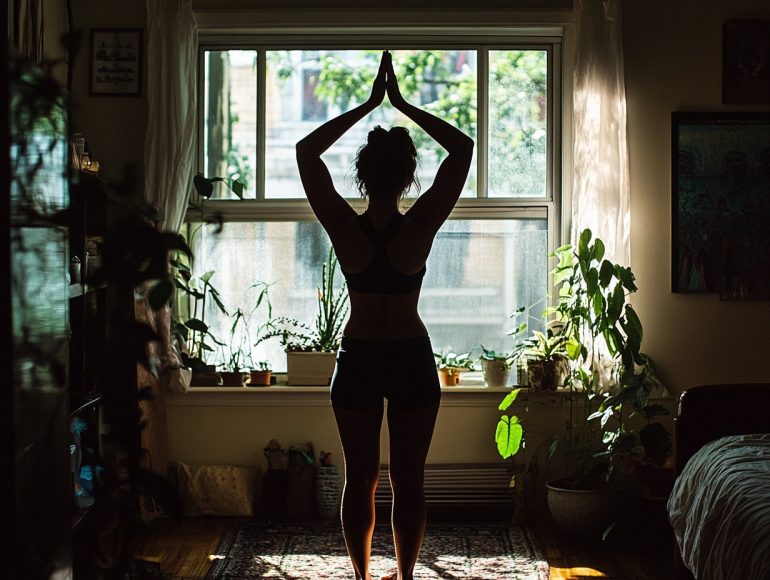How to Stay Fit & Healthy When You Can’t Get to the Gym
Regular physical activity is crucial to your overall health and wellbeing. Exercise can help reduce the risk of heart attack and chronic diseases such as type 2 diabetes, reduce high blood pressure, improve mood, and manage your weight. But getting to the gym is not always an option, and finding the time and motivation to work out at home can be a daily challenge for many.
Even if you can’t venture out to exercise, there are ways to maintain your physical and mental health. Heather A. Milton, MS, RCEP, CSCS, and Rondel King, MS, CSCS, CES, exercise physiologists and sports health experts at NYU Langone’s Sports Performance Center, encourage people to get creative and explore new options. “Adapting your home environment so you have a dedicated workout space can help you maintain a consistent fitness routine,” Milton says.
They share their ideas for staying active and building exercise into your day that don’t require a gym, special equipment, or a major time commitment. “Cardiovascular conditioning is fairly easy to maintain because it doesn’t require equipment,” King says.
Go Online to Get Fit
Fitness experts, gyms, and studios offer livestream events on Instagram and Facebook that you can follow along. Some fitness experts, such as Jessica Smith, Joe Wicks, and Kai Simon, also upload free workouts and exercise demonstrations on their YouTube channels.
If you have a personal trainer, ask whether they offer virtual training services via Skype or FaceTime for when you want to work out but can’t head to the gym. Many gyms also offer free online cardio and strength classes to its members.
Streaming workout services are another option. Companies including Obé, Tone It Up, and 305 Fitness have been in the online space for years, offering a variety of cardio, strength, and dance-based content both live and on-demand from qualified instructors.
People who prefer a more do-it-yourself approach can get guidance from fitness apps, such as Fitocracy, Traineo, and SparkPeople. These apps can also connect you with fellow exercise enthusiasts and fitness professionals.
Put on Your Dancing Shoes
Dancing is a great way to boost your mood and increase your heart rate, which improves cardiovascular health. Whether you take online classes or move to your favorite music, dancing also improves muscle tone, strength, coordination, agility, and flexibility.
If you prefer more structure, YouTube offers several dance-inspired workouts that are free. There’s the POPSUGAR Fitness 20-Minute Strong by Zumba® cardio and full-body toning workout and BeFiT’s Latin Fat Burn Sizzle Workout: Burn to the Beat with Keaira LaShae, and Leilah Isaac’s channel offers several belly dancing videos designed to help you burn fat.
Build a Home Gym
Set up a gym in your home, whether it’s in the corner of your apartment’s living room or the spare bedroom in your house. There’s no need to buy a treadmill or a mini elliptical trainer that fits under a desk. You can equip your home gym with the following:
- jump rope
- resistance bands
- medicine ball
- dumbbells
- kettlebell
- yoga mat
You can also use routine household items such as a chair and a sturdy step stool to do step-ups, triceps dips, and push-ups, and bags of rice or grains as weights or sandbags. “Even young children or pets can be used as added resistance for your squats, push-ups, and bicep curls,” Milton says.
Relax the Mind
Along with staying physically active, maintaining mental health is also vital. Meditation is an excellent way of easing anxiety and reducing stress. There are many types of meditation techniques, including guided meditation, qigong, and yoga.

